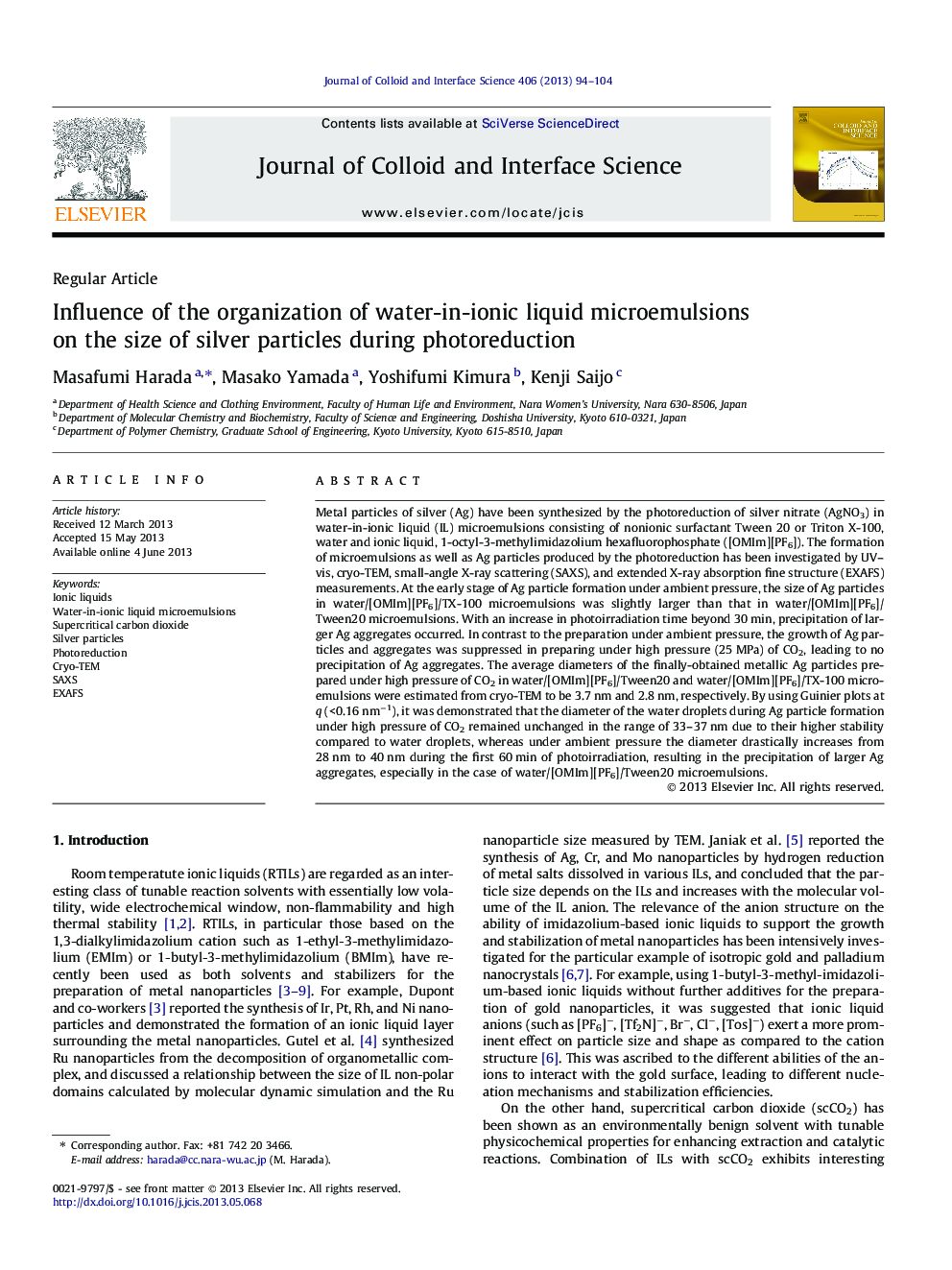| Article ID | Journal | Published Year | Pages | File Type |
|---|---|---|---|---|
| 607604 | Journal of Colloid and Interface Science | 2013 | 11 Pages |
•Ag particles were synthesized by the photoreduction in water-in-ILs microemulsions.•The hydrophobicity of anions in ILs improved the stability of Ag particles.•The solubilized water molecules in the palisade layer stabilized large aggregates of Ag particles.•The growth of Ag particles was suppressed under high pressure of CO2.
Metal particles of silver (Ag) have been synthesized by the photoreduction of silver nitrate (AgNO3) in water-in-ionic liquid (IL) microemulsions consisting of nonionic surfactant Tween 20 or Triton X-100, water and ionic liquid, 1-octyl-3-methylimidazolium hexafluorophosphate ([OMIm][PF6]). The formation of microemulsions as well as Ag particles produced by the photoreduction has been investigated by UV–vis, cryo-TEM, small-angle X-ray scattering (SAXS), and extended X-ray absorption fine structure (EXAFS) measurements. At the early stage of Ag particle formation under ambient pressure, the size of Ag particles in water/[OMIm][PF6]/TX-100 microemulsions was slightly larger than that in water/[OMIm][PF6]/Tween20 microemulsions. With an increase in photoirradiation time beyond 30 min, precipitation of larger Ag aggregates occurred. In contrast to the preparation under ambient pressure, the growth of Ag particles and aggregates was suppressed in preparing under high pressure (25 MPa) of CO2, leading to no precipitation of Ag aggregates. The average diameters of the finally-obtained metallic Ag particles prepared under high pressure of CO2 in water/[OMIm][PF6]/Tween20 and water/[OMIm][PF6]/TX-100 microemulsions were estimated from cryo-TEM to be 3.7 nm and 2.8 nm, respectively. By using Guinier plots at q (<0.16 nm−1), it was demonstrated that the diameter of the water droplets during Ag particle formation under high pressure of CO2 remained unchanged in the range of 33–37 nm due to their higher stability compared to water droplets, whereas under ambient pressure the diameter drastically increases from 28 nm to 40 nm during the first 60 min of photoirradiation, resulting in the precipitation of larger Ag aggregates, especially in the case of water/[OMIm][PF6]/Tween20 microemulsions.
Graphical abstractFigure optionsDownload full-size imageDownload high-quality image (102 K)Download as PowerPoint slide
